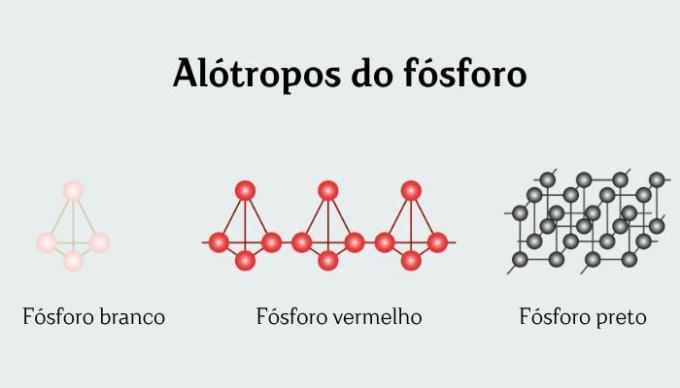A flag of qatar is a national symbol of the country, known as Al-Adaam. It is composed of the colors white and burgundy, a shade of red historically associated with the country. One of the first places to produce burgundy ink was the islands of Al Khor, off the coast of Qatar, and she was chiefly employed in making cloth.
A adoption of a single flag for the country happened in the year 1851. Later, in the first half of the 20th century, Qatar adopted a new flag similar to the current one, but with some divergent points, such as the inclusion of diamonds and the name of the country in the white part. It was in the 1960s that Qatar adopted the current configuration of the flag, and in 1971, the current dimensions were incorporated. The country's legislation established, in 2012, the pavilion's technical criteria, such as the official colors in the correct tone, dimensions and format.
Read too: Flag of Saudi Arabia — national symbol referring to the Islamic faith
Topics of this article
- 1 - Summary about the flag of Qatar
- 2 - Meaning of the flag of Qatar
- 3 - History of the flag of Qatar
- 4 - Qatar
- 5 - Curiosities about Qatar
Abstract about the flag of Qatar
The flag of Qatar is a national symbol of the country.
It is formed by a rectangle whose width is more than twice the height, which is one of its particularities.
The colors of the Qatari flag are white and burgundy, separated by a serrated line with nine points.
Burgundy was the color of ink produced on an island 40 km from the city of Doha, capital of Qatar.
The production of fabrics in this hue has historically associated burgundy with Qatar.
The current configuration of the Qatari flag was adopted in the 1960s, while the dimensions we know today were adopted 11 years later, in 1971.
The technical specifications regarding the format, dimensions and shade of red were defined by legislation in 2012.
Qatar is a country of Middle East bathed by the Persian Gulf, with capital in Doha. It has a developed economy and a high level of urbanization. In addition, the country hosted the 2022 World Cup.
Qatar flag meaning
The flag of Qatar is made up of a rectangle which is more than twice as wide as it is tall, composed of two colors: white and burgundy, a very dark red that approaches brown. White is the narrowest strip and is positioned on the left, next to the mast, separating from burgundy by a serrated line made up of nine points. These details are important to differentiate the flag of Qatar from the flag of Bahrain, which features serration with five points and a vibrant red color instead of burgundy.
This national symbol of Qatar represents the dignity and the unity of the inhabitants of Qatar.The nine points represent the inclusion of Qatar as the ninth member of the Truce or Reconciled Emirates in the year 1916. The colors, in turn, present different interpretations that refer to the history of that country.

The white color symbolizes peace. already the burgundy is representative of Qatar's socioeconomic history, more precisely of the first peoples to inhabit the region where the current territory of Qatar is located. The burgundy coloring, now characteristic of the national flag, was produced using a substance extracted from the shells of molluscsmurex caught on the island of Al Khor (or Purple Island), which is approximately 40 km from the city of Doha, capital of Qatar. At the time, only Qatar and Tire, a Lebanese city, produced burgundy ink.
Burgundy was a color associated with nobility and therefore called royal red or imperial red. A paint was also marketed byPhoenicians, which formed a civilization that developed in the northwest region of the Middle East, where today is located the current Lebanon, between the years 3000 and 500 a. W.
Do not stop now... There's more after the publicity ;)
Qatar flag history
The history of the Qatari flag begins long before the establishment of the Qatari national territory as we know it today. As we learned earlier, the burgundy color associated with the flag was originallyThe from the ink produced from molluscs found on the coast near Doha thousands of years before the present. The name by which the flag of Qatar is known, Al-Adaam, is used in reference to the dark red or burgundy. In its origin, the word means support or even a person who moves forward on their journey with great confidence.
O burgundy was historically associated with Qatar for its rich textile production that developed in the country, as well as traditional clothing that was made in that particular shade of red. After a long campaign by the UK in the Persian Gulf, which was mainly aimed at current United Arab Emirates, a peace agreement was sealed between the East India Company and the territories that made up the so-called Truce Emirates. Among the demands was the creation of a single flag to represent the Arab territories, called the Hudna.
The 1820 agreement, however, was not signed by Doha — which was called, at the time, al-Bada — due to attacks carried out by one of the ships of the British fleet. Thus, Hudna was not adopted by Qatar, and each of the villages that made up the country had its own flag. O advent of a single flag for Qatar happened only in 1851 through threats of invasion, thus demonstrating unity.
During the first decade of the 20th century, after a period of Ottoman domination, Qatar signed a agreement with the British authority, but did not adopt Hudna, maintaining its own flag burgundy. In 1932, the British decided that Qatar should have its own flag. and they had suggested the use of red, but the country kept burgundy. The flag was then formed by a white part, where the word “Qatar” could be read, and a burgundy part, separated by nine points with a reddish diamond on each one.
He was in the 1960s what the flag of Qatar acquired the settings that we know today, and, 11 years later, the current dimensions were defined. In the year 2012, the technical specifications, such as dimensions and color, were officially established by the country's legislation.
Read too: Flag of Canada — national symbol heavily influenced by France and England
Qatar

Qatar is a country of 11,600 km² located in the Middle East and bathed by the waters of the Persian Gulf. It establishes land borders only with the Saudi Arabia, South. Despite its maritime influence, Qatar has desert climate with high thermal amplitude, in addition to very low annual rainfall, which rarely reaches 100 mm and is concentrated in the months corresponding to the winter. The relief of Qatar is formed by desert plains, with low vegetation cover.
A capital of Qatar is the city of Doha, located on the east coast. 653,000 people live there, making it the second largest city in the country. The largest of these is Al-Rayyan, with nearly 780,000 inhabitants. Only these two urban areas concentrate approximately 49% of Qatar's population, which is 2,930,000 inhabitants (UN, 2021). Most of the Qatari population is made up of people who have migrated from other countries, especially from other Arab nations. In that sense, the Arabic is the official language of Qatar, English being widely used as a second language.
A Qatar's economy stands out as one of the largest in the world. The exploration and commercialization of Petroleum It is natural gas are the main activities responsible for putting Qatar in this position. The country also has a high level of development and urbanization.
Facts about Qatar
Qatar was chosen to host the 2022 World Cup. Due to the very hot and dry climate, there was a change in the period in which the event took place: instead of the games taking place in the mid-year, as is traditionally the case, they were transferred to the end of the year, coinciding with the mildest season in the country.
It is the first Arab country to host a World Cup.
The exact shade of brown on the Qatari flag was defined in 2012 by the local government as Pantone 1955 C.
The highest point in Qatar is Mount Tuwayir al Hamr, situated at an altitude of 103 meters.
The family that makes up the monarchy of Qatar has been in power since 1868.
By Paloma Guitarrara
Geography Teacher
Learn more about Qatar, an Arab country in the Middle East with one of the largest economies in the world, driven by the exploitation of oil and other natural resources.
Click and learn more about Islam, the second largest religion on the planet. Understand the origins of this religion and learn about its principles and five pillars.
The Middle East is one of the most important areas in the world in historical and geopolitical terms. Click to read our text and learn more about this region.
Learn more about Asian countries. Find out how many and what they are, as well as their respective capitals. Learn about the regions of Asia and see fun facts.
Learn more about oil, a fossil fuel widely used for power generation. Find out which are its derivatives and the countries with the largest reserves.



